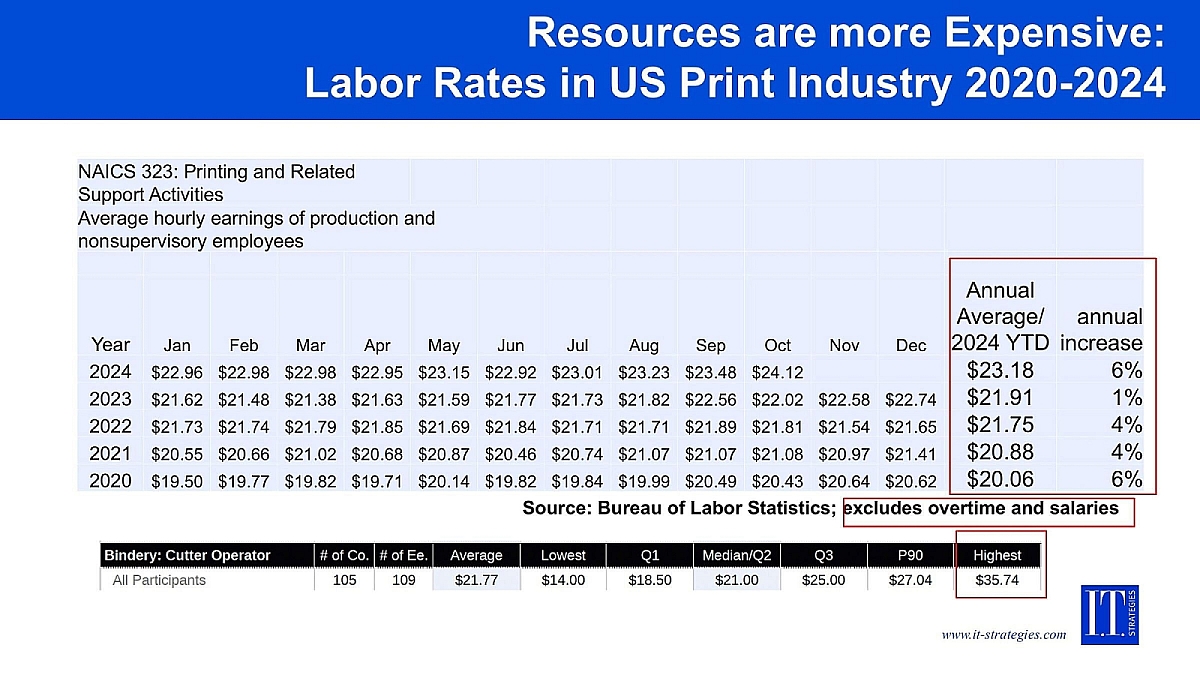Mitigating the impact of rising wages

Big shifts in the labor market for the print industry are already underway. A large portion of skilled printing employees are aging out of the workforce, and it will be hard to find people to replace them. Younger, less skilled candidates are seeking out less demanding, higher paying jobs in fields like logistics (e.g. Amazon).
The declining supply of labor is putting upward pressure on wages. Since the beginning of COVID, labor costs according to the US Bureau of Labor have gone up 4% annually. Based upon my conversations with our customers, these statistics underestimate the real wage increases, as they don't account for overtime nor regional differences in labor cost.

Printing United Alliance, the US Print Industry's trade group, shows that based upon their surveys some commercial printers are now paying hourly print operators as much as $35/hour. The fact is that labor has gotten a lot more expensive.
What none of this data accounts for, however, is that you might not be able to find qualified labor, even if you could pay for it. The US Bureau of Labor statistics data projects that two critical job functions, pre-press and print finishing, will be in the top 20 of the fastest disappearing jobs in the US between now and 2033.
This is why Kodak is laser-focused on helping commercial printers reduce the need for labor by increasing automation and efficiency. Our SONORA process free plates are easier to handle than other plates, reducing start-up time and saving money on paper and ink waste compared to wet-processed plates. Our CTP devices reduce the need for labor with advanced automation systems. Our PRINERGY workflow platform provides end-to-end automation that streamlines processes and maximizes productivity. And our inkjet presses are the most productive in the industry, running up to 3X faster than our closest competitors.